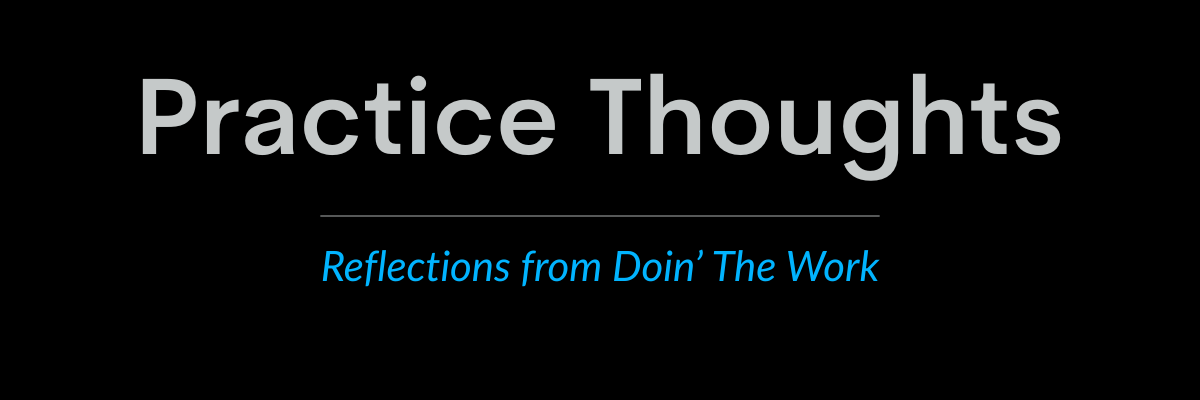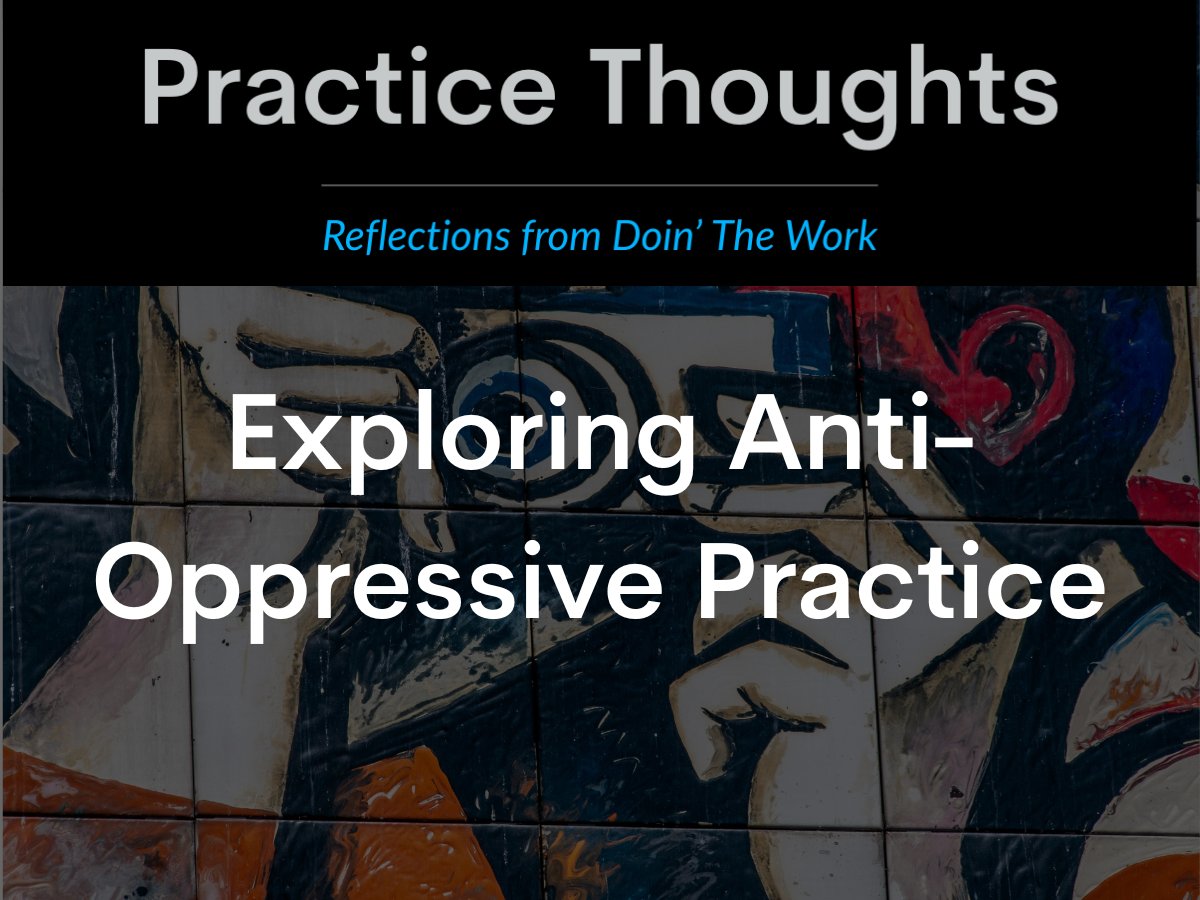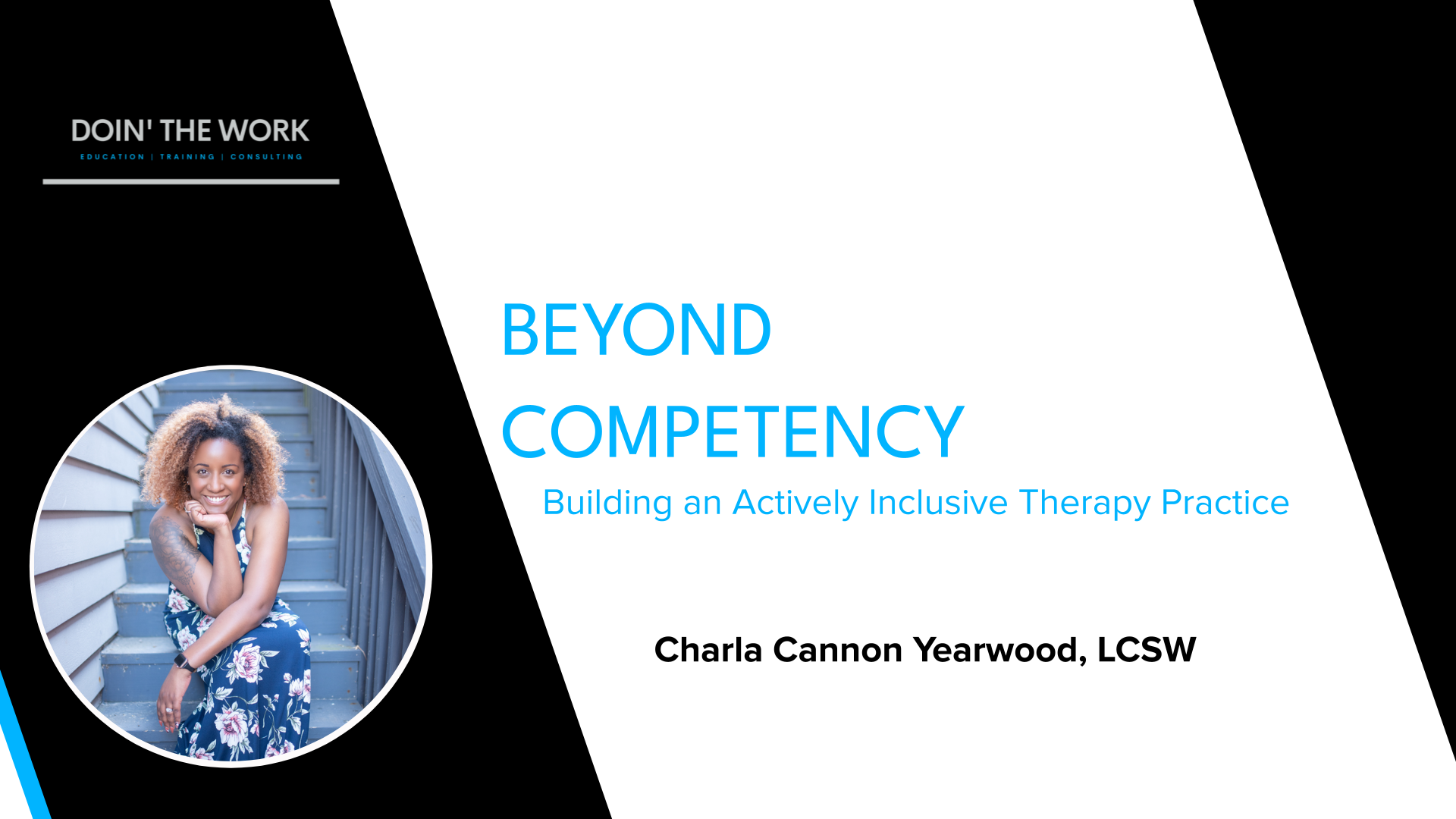

It's still wild to me that after an undergraduate program in family and human services and a graduate program in social work, plus years working in the field, plus years as clinical faculty in a social work program, I didn't come across anything about anti-oppressive practice until I kept searching deeper and deeper while working on curriculum for the courses I was teaching.
The thing is that I actually had a good understanding of anti-oppressive theory and some practices due to my out-of-school years where I did organizing and activism around prison issues, sexual assault prevention, environmental destruction, mutual aid, and more. This was during the time after I left college (dropped out) and before I went back for an undergraduate degree once I knew what I wanted to study based on work I was doing in the community.
However, once I was in school and being "professionally trained", much of what I was learning was anything but anti-oppressive or justice based. In fact, I had issues with a lot of what I was being taught, especially around how to view people and their problems. It felt very compartmentalized and hierarchical. Talk of solutions and empowerment felt superficial, only allowed within the confines of what those in power dictated. I'll say more about all this another time.
So, coming across anti-oppressive practice (AOP) and seeing that there was a whole history of practice, research, and education within social work brought up feelings of excitement, affirmation, and frustration. Why didn't I know about this? Why aren't we teaching this? Why are so many not practicing this way?
Before wrapping up this first edition of Practice Thoughts, I'll leave you with a couple of takeaways for practice. I'll go further with this in the next issue.
Where did you first learn about anti-oppressive practice?
Reference
The thing is that I actually had a good understanding of anti-oppressive theory and some practices due to my out-of-school years where I did organizing and activism around prison issues, sexual assault prevention, environmental destruction, mutual aid, and more. This was during the time after I left college (dropped out) and before I went back for an undergraduate degree once I knew what I wanted to study based on work I was doing in the community.
However, once I was in school and being "professionally trained", much of what I was learning was anything but anti-oppressive or justice based. In fact, I had issues with a lot of what I was being taught, especially around how to view people and their problems. It felt very compartmentalized and hierarchical. Talk of solutions and empowerment felt superficial, only allowed within the confines of what those in power dictated. I'll say more about all this another time.
So, coming across anti-oppressive practice (AOP) and seeing that there was a whole history of practice, research, and education within social work brought up feelings of excitement, affirmation, and frustration. Why didn't I know about this? Why aren't we teaching this? Why are so many not practicing this way?
But once we understand some of the core analysis within anti-oppressive practice, specifically that social work has a history and present reality of social control rather than social justice or social change, it's clear why anti-oppressive practice has been marginalized.
So what is anti-oppressive practice?
Drawing from Baines (2017) some core themes of AOP include:
So what is anti-oppressive practice?
Drawing from Baines (2017) some core themes of AOP include:
- Oppression is generated (and challenged) by macro & micro social relations.
- People experience multiple oppressions as part of their ordinary, everyday existence.
- Social work is a political practice.
- There is no neutrality.
- AOP practitioners assist individuals with meeting their needs while working to transform society.
- We need to build coalitions and collaborate with social movements.
- Social work theory & practice must be based on the struggles of people who are marginalized and oppressed.
- As practitioners, our approaches with "clients" need to be collaborative and participatory.
- We must engage in ongoing critical self-reflection and social analysis.
- A blended, flexible approach is often most effective.
Before wrapping up this first edition of Practice Thoughts, I'll leave you with a couple of takeaways for practice. I'll go further with this in the next issue.
Here are some ways to engage in client-centered AOP practice:
- Understand systems of oppression and our positionality
- Honor participants' lived experiences
- Focus on collaboration
- Practice power with not power over
- Engage in advocacy at every level possible
Where did you first learn about anti-oppressive practice?
Reference
Baines, D. (2017). Doing anti-oppressive practice: Social justice social work (3rd ed.). Fernwood Publishing
What are your thoughts/reflections? Join the community and engage in our discussions.
What are your thoughts/reflections? Join the community and engage in our discussions.
Get Connected. Join The Community.
We’re building a community of learning, reflection, and action. Come connect with others committed to justice, healing, and equity in their work.
You'll also be the first to know about new CE opportunities, podcast episodes, and tools to support your practice.
You'll also be the first to know about new CE opportunities, podcast episodes, and tools to support your practice.




